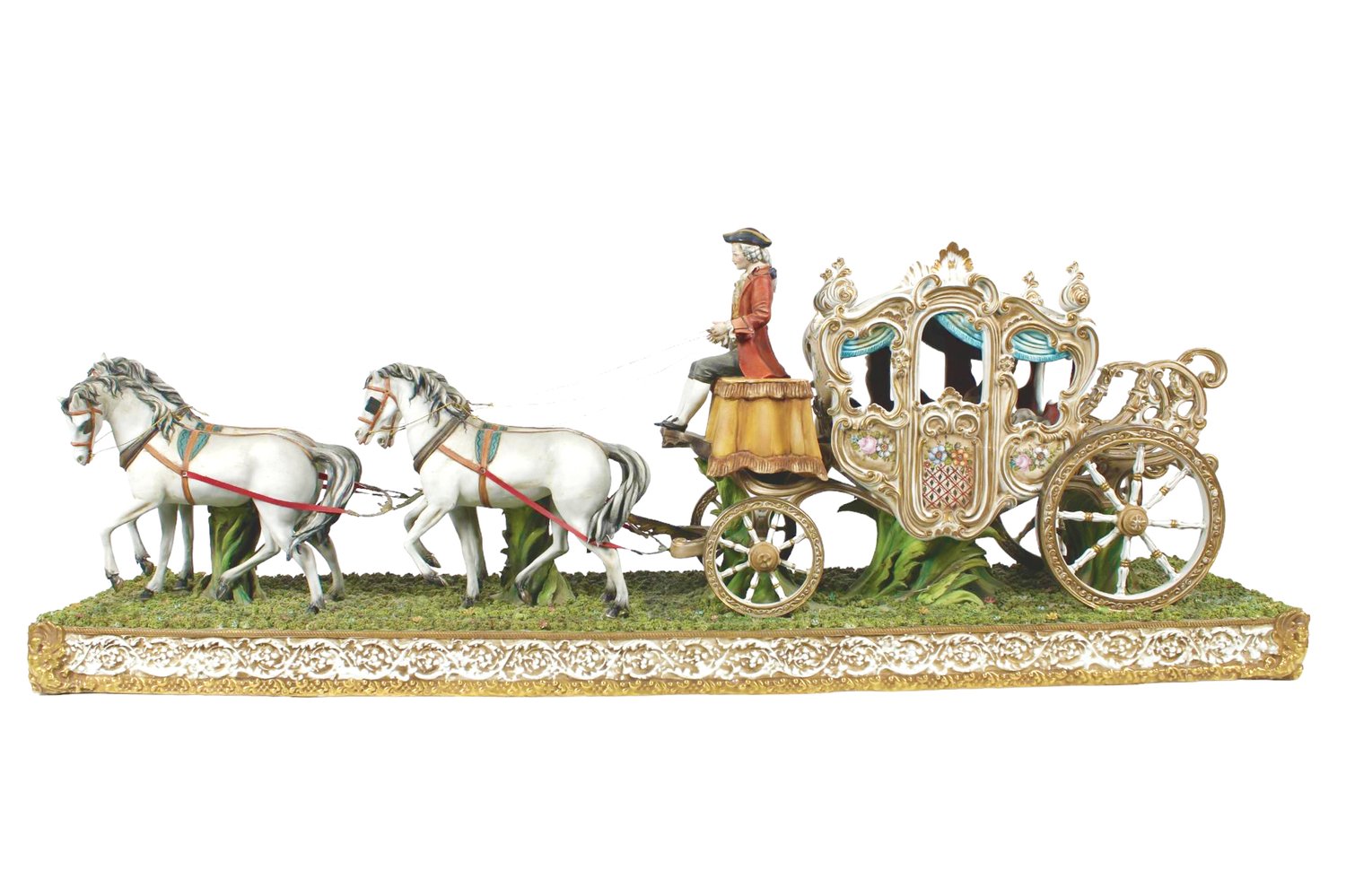$2,995.00
Rare Vintage Monumental Porcelain Horse Drawn Victorian Carriage centerpiece group
Capodimonte Porcelain, after a model by Giorgio Galletti
Naples, Italy; second half of the 20th century
Porcelain
Approximate size: 37 (w) x 15 (h) x 10 (d) in.
This beautiful and elaborately detailed porcelain group features an ornately modeled carriage drawn by four horses. The coach features a driver seated on his perch wearing a tricorn hat and a lovely lady is seated in the coach box wearing a light blue dress with intricate gesticulating openwork porcelain lace on her dress. The composition is richly decorated with attractive hues and gold highlights.
The exquisite detail and technical execution of this large work is indicative of the quality craftsmanship found in the traditions of Southern Italy. The Capodimonte porcelain mark and Galletti signature are featured on a cartouche and banderole along the backside of the carriage.
We have not located any other examples produced exclusively by Capodimonte although the Tiche Porcellane d'Arte in Rome, established in 1962, produced a limited quantity of examples, apparently in collaboration with Capodimonte, and can be located in the market (the model can be found in their foundry catalog as model no. 290). These versions feature both the Tiche and Capodimonte marks along with the Galletti signature. These editions also differ from our version, featuring blue tufts separately applied to the horses, integral red and yellow saddle blankets and the horses lack the blinders as featured on our example. We are to assume these were alterations made to the model when transferring to the Tiche production of this artwork. Our example either precedes the Tiche version or may be a later iteration of the model following an initial limited run produced by Tiche.
Please note that this fantastic example is not to be confused with a much smaller serially produced and redacted model produced by Capodimonte in a commercially savvy version modeled by Giuseppe Armani.
